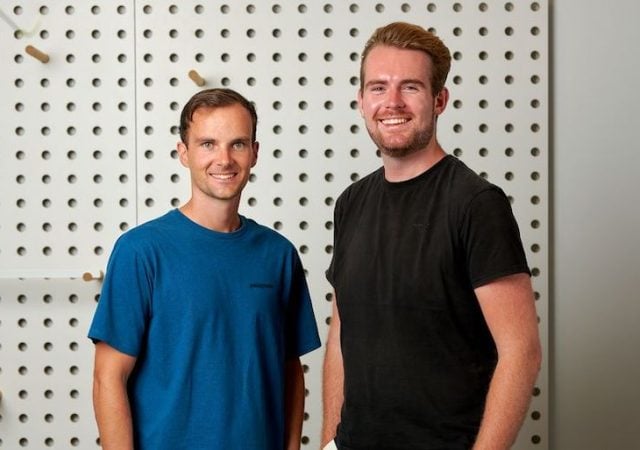Not a day goes by without an innovator claiming to have had their intellectual property ripped off.
Sometimes it’s by an investor and potential partner, as many startups claim about Amazon. Or by an employee, like the Apple engineer accused of stealing the source code for Apple’s self-driving car and on selling it to a rival.
But it could also just be a rival reverse engineering your product and undercutting you in the market, as happened to an entrepreneur whose selfie-stick was reverse engineered and on sale by rivals before he completed his Kickstarter campaign.
Large firms invest huge amounts of resources into trying to prevent their intellectual property falling into the wrong hands, they spend millions of dollars on filing and enforcing legal protections – like patents and trademarks – and even build internal security services. And they still fail. What hope do smaller firms have?
Smaller firms don’t have the same resources at their disposal to imitate these strategies and, to be honest, even those that do have the funds to file for patents, which is the textbook solution, consistently find their effectiveness underwhelming.
Patents are expensive, costly to enforce, and reveal a lot of your secret sauce to those hoping to reverse engineer your innovations and invent around your patents. However, if you can’t stop rivals from appropriating your innovations, your margins will be squeezed into oblivion.
Through the University of Queensland Business School MBA program, I teach my students to focus on three design strategies to help protect their innovations.
Build theft traps
It’s often not obvious when your innovations are being copied. Innovators can address this challenge by designing traps to help identify and thwart their adversaries.
Traps work by enabling you to detect an adversary’s imitation attempt and trace credible evidence of these activities.
For example, when building maps cartographers might add deviations from reality to their maps that “trap” unsuspecting plagiarists.
Since the plagiarist hasn’t surveyed the streets themselves, they don’t know what does and does not exist in the real world and thus copy everything on the map.
Reproducing a street that doesn’t exist is then clear evidence that someone is copying your work and the entrepreneurial cartographer can seek redress. Innovators can be found building traps in industries ranging from integrated circuits and servers through to software and lyrics publishing.
Music website Genius caught Google copying lyrics from its website using this approach. By changing the types of commas used, Genius could identify evidence that Google had been serving its customers lyrics taken without permission from Genius’ website.
The case is currently before the US Supreme Court. Traps help you to detect imitation and provide the evidence required to respond.
Equip a Cloak
Designing a “Cloak” for your innovation helps conceal critical IP from those that might seek to rip you off.
Cloaks can be intangible, such as when source code is encrypted, or an obfuscator is applied to the application.
They can also be tangible, such as when a firm I was studying erected a large sheet around their construction site to prevent rivals from observing the process innovations involved in launching a tunnel boring machine, or when car manufacturers add camouflage to their prototypes.
This approach played an important role in Ms. Pacman becoming the world’s most successful arcade game. The team programmed a digital lock that inhibited rivals from reverse engineering their chip and flooding the market with clones of their game.
The key to a successful cloak is its ability to obfuscate the knowledge required for imitation. Cloaks can slow imitation and thus improve the duration of your lead over rivals.
Leverage Modularity
Innovations are often made up from different modules.
Designing the interfaces of these modules can provide you with important control over who has knowledge about pieces of your innovation and how they come together.
This insight has inspired the use of “split chip” designs in integrated circuits, where a chip is split into components to be manufactured by a low-cost untrusted foundry and those by a high-cost trusted foundry. The commodity section of the chip can then be sent to the untrusted foundry where any illegal imitation will have no negative impact on your innovation.
Meanwhile, the propriety section of your chip, containing all your secret sauce, can be manufactured at the trusted foundry, thus reducing the risk of it getting ripped off.
Leveraging modularity here enables you to have your cake and eat it too; you get a lower average cost of production without the risks. But it’s not just high-tech products that can benefit from this approach.
I’ve also met innovators making low-tech products like point-of-display advertising that use this approach to enable them to lower their costs of production while reducing the risks of having their intellectual property appropriated by rivals.
The ease at which rivals can imitate your innovation impacts your competitive advantage and financial prospects. Small firms struggle to achieve these outcomes with legal mechanisms alone.
The three design strategies outlined here provide innovators and entrepreneurs with additional options as they can use to protect their innovation while scaling up.
- Dr Sam MacAulay is Deputy Program Convenor (MBA and Executive Education) & Senior Lecturer in Innovation at University of Queensland Business School




















Trending
Daily startup news and insights, delivered to your inbox.